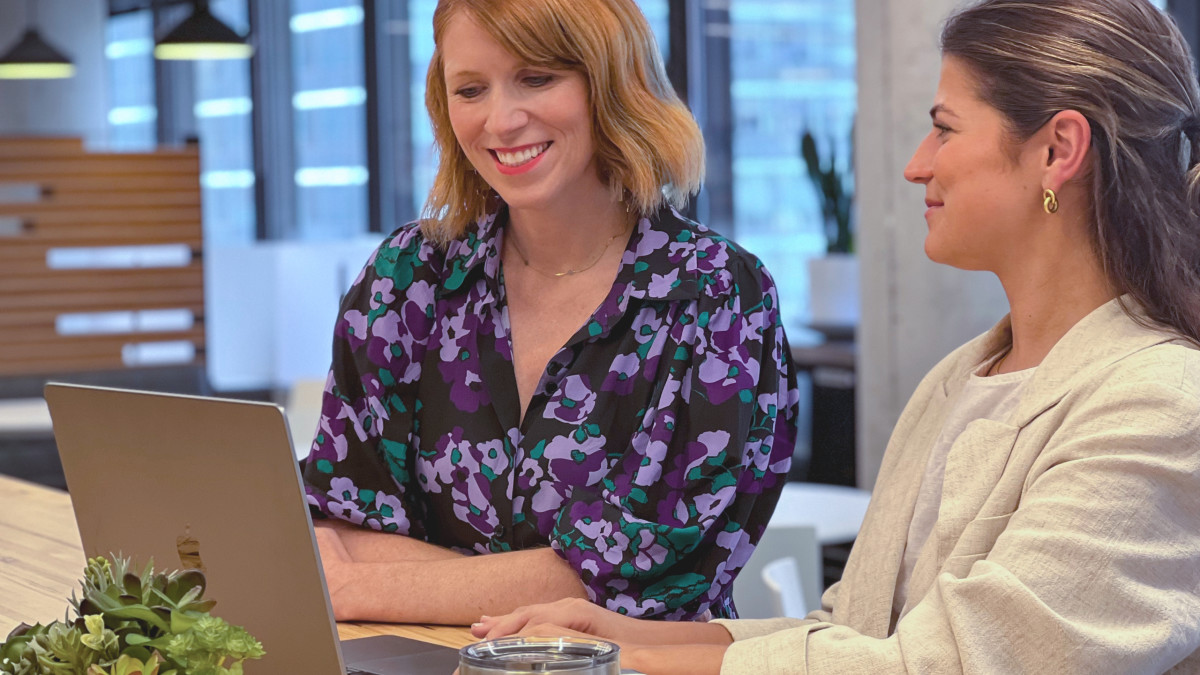
You could say I am mid-life, middle-aged, mid-career—all these time markers are accurate. Despite never having attended an actual design school, I’ve been working in the field since the early 2000s, when I started my career as an insecure designer, happy at the time to hone my budding design skills on mostly PowerPoint presentations.
Struggling in the Beginning
Early on, I knew I wanted to be creative in my profession, but I always struggled with the impact that design had in the world. Could a career in design feel fulfilling? It was hard to see how design helped people or made the world a better place. I would rationalize that communication was important and that design helped information to be communicated—which is true—but that never felt like quite enough for me.
Over the years, I got better as a designer but also faced some typical workplace challenges like difficult bosses, toxic coworkers and clients, and really long hours.
During a particularly tough time, I even looked into going back to school to become a psychologist or counselor. I didn’t love work and was searching for something that would make me feel good—something that would feel like I was actually helping people. I wondered at the time, how could I do more as a designer than just the design work itself?
I didn’t end up pivoting in my career, and I’m so glad I stayed with design. Now free from any difficult bosses and toxic work environments, I finally have room to be the designer—and leader—I want to be.
What changed? Well, a lot of things. Some had to do with where I work, some were more about how I work and the role I am in, and others were about the actual design work. There are ways to do good as a designer. I just had to find them.
Finding Deeper Meaning in Work
I started out in mostly print design, then pivoted to web design about 10 years ago and luckily got on the user experience (UX) train, just as it was leaving the station, so to speak. Gone are the days of doing brochure websites (mostly), and the work has become so much more complicated. And recently there has been a lot more consideration given to who is using a site and any varying needs they have.
For me, this is where the design work gets interesting.
Making sure a site I design or oversee is accessible is now a very regular part of my job. I bring it up as I review designs with my team, and I champion it in meetings with project teams and clients. I feel good about this, but also, I see it as a baseline—just the beginning.
What’s really exciting is when we have the opportunity to affect the entire experience of a group of users who historically have been overlooked. Recently, I had the opportunity to work on design sprint prototypes for a global company. These prototypes focus on improving the purchasing experience for their deaf or hard of hearing customers.
To be in a walkthrough of the prototype and see the pure joy on the face of the user as they experience what we created was so fulfilling. My coworker, Andy VandenHeuvel, an XD strategist at Credera, said to me that it was “one of the most meaningful testing sessions I’ve ever had—maybe the most.” And as I watched the video recording of the session afterward, I would have to agree. That was it right there: We are helping. We are doing good.
Going Beyond the Work
Not every project is going to be that impactful, so I come back to one of my original questions, how could I do more as a designer than just the design work itself? My answer to that is, well, another question: How can you shape your role at work to be more than your expected job responsibilities?
OK, I admit that this concept sounds pretty vague and may not be for everyone, but let me explain: So you are a designer, but what else do you care about? Can that be a part of your job too?
Fortunately, I work for a company that provides a lot of opportunities to join causes you care about and serve in ways beyond your role. We have a ton of employee groups you can be a part of, many of which help people we work with, our communities, and, in some way, the world.
Contributing to Our Organization’s Diversity, Equity, and Inclusion Work
During the summer of 2020 and through the protests of the deaths of George Floyd and Breonna Taylor (and so many others), we had a reckoning of sorts about race and inequality in our country. In the design space, there were a lot of conversations about the lack of Black designers and the overall and historical whitewashing of design.
As a white woman, I felt shame about doing little to make any of this better and really struggled with how I could help. In my current position, I am fortunate to be a part of our diversity, equity, and inclusion committee—specifically, the recruiting area of it.
Together, we brainstorm ways to find and attract more diverse talent and are working to put those ideas into action. We are a long way from the where we want to be as far as having a workforce that represents the diversity of our communities, but we have numbers and goals, and we are trying to move the needle.
Understanding and Identifying What Fulfills You
Maybe you get fulfillment out of helping other designers? One of the senior designers on our team, Kristen LaBarbera, would help onboard new designers and interns on to our team. Initially she did this informally, creating projects to help them learn Figma, our design program. And then our onboarding team found out what she had created—which was essentially a learning project and curriculum—and formally weaved it into our onboarding process.
“I found joy in ensuring everyone on the team feels set up for success from day one.” Kristen said. “A love for learning has been the biggest advantage in my career, it felt natural to want to foster that in others.”
I’m just learning this now, while Kristen is young and at the beginning of her career. I am so impressed with our team and how I see them doing the things it took me such a long time to realize made me feel fulfilled.
Whether it’s diversity, LGBTQIA issues, climate change, accessibility, helping nonprofits, helping new designers learn skills—there are so many ways to have an impact. Find the thing you care about and weave that into your job if you can, and suddenly your place of work becomes so much more.
There will still be bad days at work and things you have to do, but don’t love. No job is perfect all the time. But, for me, seeking out this other work and seeing the results easily outweighs the negative. It energizes me in a way I didn’t expect. It may have taken me a while to get to this point, but I am so happy I did. Better late than never, I think.

Come Grow With Us
At Credera, we’re excited about finding ways for our team members to love their jobs. If you’re interested in a career where you can grow and make an extraordinary impact with a diverse team, please visit our careers page.
Contact Us
Let's talk!
We're ready to help turn your biggest challenges into your biggest advantages.
Searching for a new career?
View job openings

